RECOMMEND
Locals share insight on how to spend your time in SHONAN.
The local blogger Romy-san who brought us the Summer Edition is back to provide insight on how to enjoy the winter in SHONAN. The main theme will be beautiful scenery and gourmet that is only available in winter.
Don’t miss out on all the unique entertainment the winter in SHONAN has to offer!

Romy
He is attracted by the rich environment surrounded by the sea and mountains and the peaceful time in Kamakura, that's why he moved to Kamakura from Yokohama with his family in the summer of 2016.
(Actually, he used to commute to high school in Kamakura!)
Since then, he posts about living in Shonan, Kamakura・gourmet・outdoor information・domestic and overseas travel journals. He likes to journey, go to cafe, dance, surf and watch the sunset at the beach.
■Blog:
romyhiromi.com
■Instagram:
instagram.com/romyhiromi/
Winter Scenery to Enjoy in SHONAN
Winter Gourmet to enjoy in SHONAN
Winter Scenery to Enjoy in SHONAN



The New Year’s Scenery
New year, or O-Shogatsu, is the liveliest time of the year in Kamakura.
When thinking of hatsumode(the first shrine visit of the year) in Kamakura many would probably think of the shrine Tsurugaoka Hachiman-gu. But for me, the obvious choice has always been Hongaku-ji temple in Oomachi.
From December you can start to see the signs as preparations become more and more apparent on the temple grounds. The atmospheric and nostalgic paper lanterns that are hung around the temple signals that O-Shougatsu is drawing closer and the new year lurks around the corner.
The god of business prosperity, Ebisu, is enshrined in Hongaku-ji temple which is why many worshippers visit the shrine on the Kamakura Ebisu event stretching through 1st – 3rd January and the Hon Ebisu event on the 10th of January. Apart from praying for good luck and business prosperity, you can also buy Hongaku-ji’s unique and cute protective charm called ‘Nigiri fuku’(=Handful of good luck). There are also many different shops for food and drinks open which makes Hongaku-ji into a lively place overflowing with activity.
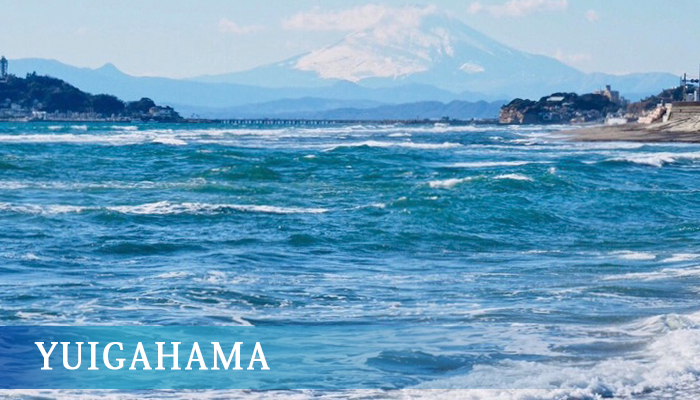
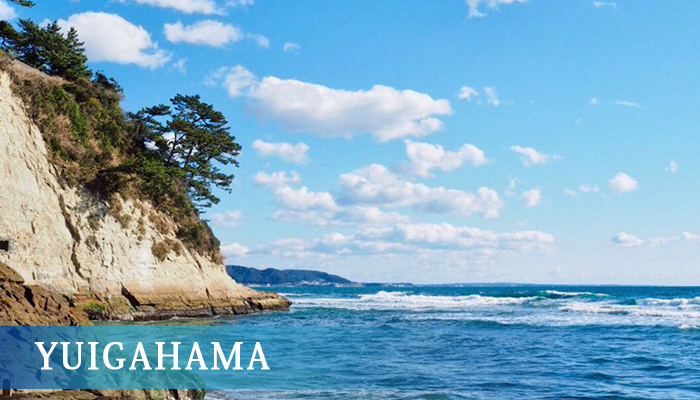


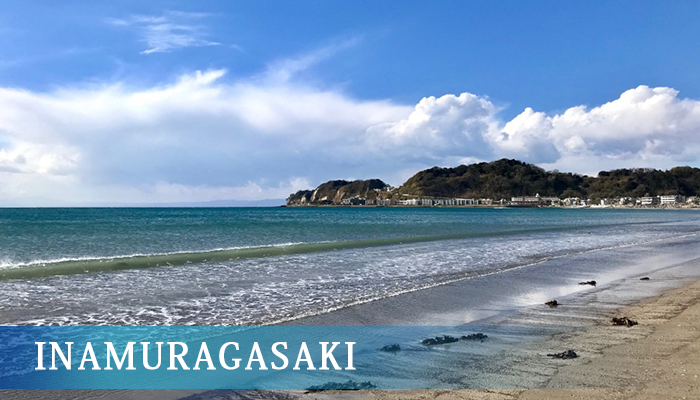
The Winter Sea
“The sea in the winter?! Too cold!!” is what many of you might think but did you know? The winter is the time of the year that the transparency is at its highest and the turquoise aquatic color of the ocean looks stunningly beautiful. Especially on clear days!
And that is not all, the clear air of the winter makes the snow-covered peak of Mt. Fuji into a regular occurrence in the landscape.
It is true that Mt. Fuji is visible from the coastline between Zaimokuza to Yuigahama but if you want to enjoy the full size of Mt. Fuji the stretch between Inamuragasaki and Kamakura high school is the best. The area around Inamuragasaki has even been selected as one of the top 100 spots to view Mt. Fuji. You can even see the appearance of Eno Island clearly in the distance which makes the winter scenery in SHONAN both unique and something that shouldn’t be missed!
For the one who wants to take beautiful pictures of both the ocean and Mt. Fuji then SHONAN in the winter is a no-brainer. Try and aim for a day with big waves and you can expect some impressive and impactful pictures.



The Plum of Myohon-ji Temple
I introduced Hongaku-ji temple in Oomachi above. Head further into the depths of this same area and you shall find the oldest temple of the Nichiren school of Buddhism, Myohon-ji temple. The temple is surrounded by trees and vegetation making it a fabulous spot to enjoy the everchanging beauty of the four seasons.
Head to the far back of the temple grounds and you will find my recommended winter spot.
As seen in the pictures above, regardless of the cold season the plum will carefully start their blooming at the end of January. So, when you feel that you need a burst of spring feelings in the middle of winter, this is the place to visit.
And of course, if you want to enjoy the full bloom it can often be seen from the end of February to the middle of March. And it doesn’t end here! After that, both Yoshino cherry and Malus halliana start their blooming as well so come and enjoy the beauty!







Hiking in the Gion Mountains
Lastly, I would like to introduce the hiking trail in Mt. Gion! There are many hiking courses in Kamakura but the one I will introduce here is no more than 1,5 km long which makes it a good start for the inexperienced hiker as well.
There are two official starting points for the trail, one by the entrance to the Takatoki Harakiri Yagura and one by the entrance to Yakumo Shrine. But the trail is also accessible from Miyohon-ji temple which is located right in between the two. The highlight of the trail is the observation post called Miharashi-dai.
If you enter the trail from Yakumo Shrine you will find Miharashi-dai once you climb the slope and the stairs. On clear days you will be able to enjoy a gorgeous view of Kamakura’s ocean and Mt. Fuji! Furthermore, the previously mentioned Takatoki Harakiri Yagura is the place where Hojo Takatoki and his family performed harakiri (seppuku), an act that lowered the curtain on the Kamakura era (year 1333) in Japanese history. Yagura is an old word for tombs used in the Kamakura era and those tombs still remain and can be observed here to this day.
The trail may be beginner-friendly but since we are talking about hiking, you should still expect both uphill and downhill paths so don’t forget to pack lightly and wear comfortable shoes.
Winter Gourmet to enjoy in SHONAN


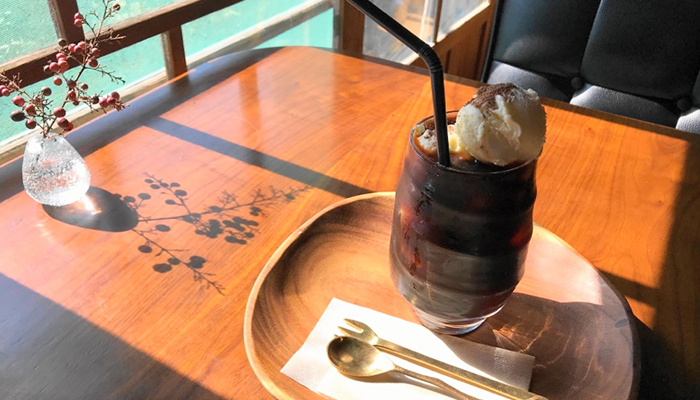


Traditional Japanese House ‘Kominka’ Café
While heading towards the entrance to the hiking trail by Takatoki Harakiri Yagura there is one building that definitely will catch your eye. This traditional old Japanese house, known in Japanese as kominka, was built 85 years ago and is now being used as a café called Tsubame café. As you enter and take off your shoes you are greeted by a tatami-style room where you can sit on the floor but there are also tables available on the porch. The nostalgic interior of the café that makes you feel like you have slipped back to mid-twentieth century Japan is also very popular as a backdrop for wedding pictures! On the menu we can find dishes as Napolitan pasta, Chinese medical tofu curry, risotto made using freshly harvested vegetables, deep-fried soya-mince and much more. When it comes to sweets a popular choice is anmitsu (syrup-covered red bean jam and fruit) or parfait with rice flour dumplings made from tofu.
A healthy line-up that can be enjoyed by vegetarians and carnivores alike!
Furthermore, especially on Saturday and Sunday the menu sells out in the blink of an eye so make sure to be early! But once you are there, feel free to forget time completely as you enjoy the slow pace of Kamakura.
A café so relaxing that
it’s hard to ever leave!
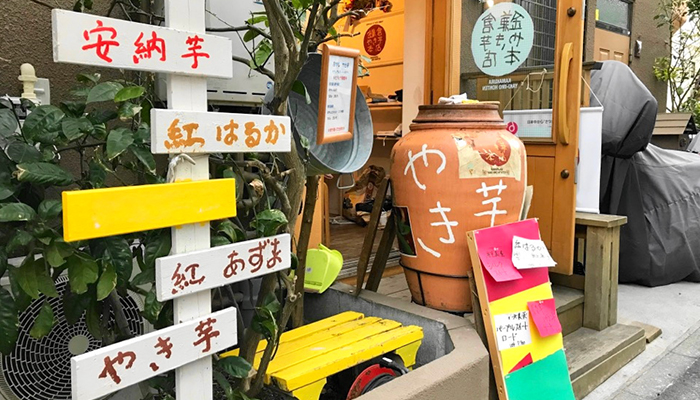




Kamakura Yakiimo (Roasted Sweet Potato) Main store
Exit through the west entrance of Kamakura station, follow the street Onaridori, once at Yukigahama street head towards Nagahama and you will soon find Kamakura Yakiimo Honten at your left-hand side. The owner has a profound love for sweet potatoes which he has gathered from around the country to roast in a particular pot chosen with the same care as the potatoes. Anno potato, Red Haruka potato, and many other sorts are sold both hot and cold by weight. You can even buy pound cake containing ripe whole roasted sweet potatoes!
Speaking of winter, there is nothing more fitting than a just roasted smoking hot sweet potato that you can eat on the spot as you feel the heat spreading through your hands. The cold potatoes can be brought home since the high natural amount of sugar makes them last for a few days.
Depending on the sweet potato there are some that taste better when hot and some that should definitely be enjoyed cold. If you feel uncertain, don’t hesitate to ask for recommendations!
I can’t get enough of the rich sweetness of yakiimo!
For the one in the mood for a healthier snack, this is it!


